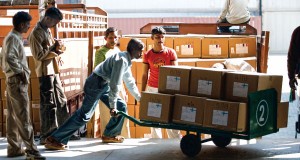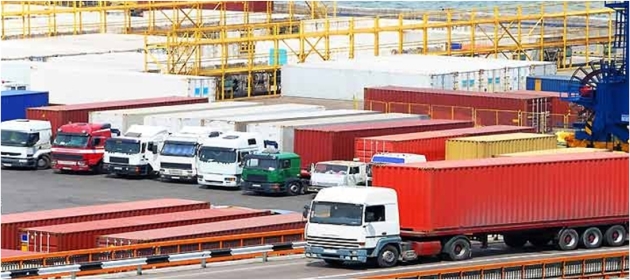An old friend of mine from my alma mater, IIT Bombay, who is now a tenured professor at North Carolina State University, was recently carrying out a sponsored study on supply chain dynamics in various parts of the world. In this context, he reached out to me a couple of months ago to seek my inputs on the state of play of logistics in India.
Having worked in the software industry for much of my career, I pled ignorance about this subject. After all, when raw materials walk in through the door at 9AM and leave at 5PM and finished goods are shipped to customers “over the wire”, there’s no movement of “hard goods” between suppliers, manufacturers and customers, the way it happens in traditional B2B logistics.
When he heard this, my friend asked me if I could share any thoughts around B2C logistics.
I could do that since I’ve gained a bit of exposure to B2C logistics, as a consumer in India and a few other mature markets. Here goes:
- Logistics is still quite primitive in India compared to many parts of the western world. Let alone deliver stage-by-stage visibility, seamless customer experience, and luxuries like that, logistics in India currently falls short of even fulfilling its basic goal of delivering something from A to B. If consignments get delivered at all, you’re lucky. But, if they don’t – a one in a four occurrence, in my personal experience – you don’t get a proper status update from the logistics provider.
- Surprisingly, this is a problem faced not just by hapless consumers but also by large enterprises who ship hundreds of millions of items every year. To quote an example, a leading MNC bank has consistently had problems delivering my credit card statement for the past ten-odd months. It claims that it hands over the statement to its regular courier company on a pre-agreed date every month. However, I never get it. When I complain about non-receipt to the bank, it sends a copy of the statement through a backup courier company, which, incidentally, charges 10X more. It will soon become evident why there’s such a huge price difference between suppliers in the same industry.
 Average courier, freight and shipping charges are much lower in India than in Germany, UK and a couple of other countries that I’m familiar with – even after correcting for price parity. This is probably because banks, e-tailers, TELCOs and other large volume shippers squeeze couriers and other logistics service providers too tightly on costs. To survive under such a situation, these companies cut every corner possible – by employing untrained labor, plying ramshackled vehicles, skimping on storage space and shunning technology. While visiting a friend’s office in a Western suburb of Mumbai recently, I noticed that the courier company located next door was stacking its consignments all over the place including out in the open. When I asked one of its employees what would happen if there was a sudden cloudburst, he merely shrugged his shoulders. Touchscreens, on which I used to digitally sign for packets around 10 years ago in Germany, are still rare in India.
Average courier, freight and shipping charges are much lower in India than in Germany, UK and a couple of other countries that I’m familiar with – even after correcting for price parity. This is probably because banks, e-tailers, TELCOs and other large volume shippers squeeze couriers and other logistics service providers too tightly on costs. To survive under such a situation, these companies cut every corner possible – by employing untrained labor, plying ramshackled vehicles, skimping on storage space and shunning technology. While visiting a friend’s office in a Western suburb of Mumbai recently, I noticed that the courier company located next door was stacking its consignments all over the place including out in the open. When I asked one of its employees what would happen if there was a sudden cloudburst, he merely shrugged his shoulders. Touchscreens, on which I used to digitally sign for packets around 10 years ago in Germany, are still rare in India.- While DHL, FedEx and other MNCs operating in India do employ well-trained manpower and use better quality of infrastructure, their shipping rates are 8-10X higher than those of mainstream courier companies. As a result, they’re affordable only for high-value (e.g. jewelry) and time-critical (e.g. tender response) shipments.
- Logistics-intensive businesses are facing mounting challenges day by day. They’re responding in one of the following ways:
- Some of them have taken logistics back inhouse e.g. India’s most visible e-commerce company, Flipkart, apparently found the going very tough when it earlier used to rely on third-party logistics companies. It solved its logistics problems – albeit at a huge cost – by hiring around 500 fulltime employees on its payroll to make deliveries of books, gadgets and other items all over India. For the moment it’s flush with VC funds and is able to afford the cost. Heady with the company’s stratospheric valuation, its investors don’t seem to be too bothered about whether it will ever turn profitable if it continues to handle its logistics inhouse.
- Others shamelessly dishonor their commitments e.g. I’ve been a subscriber of FORTUNE magazine for close to a decade in India. Typically, I receive only one out of every two issues of the magazine. Neither the magazine’s local distributor nor its parent company’s regional office in Hong Kong has ever bothered to update me with the status of the missing issues or compensate me for my loss.
- A few companies exit the business altogether after finding themselves unable to navigate the treacherous minefield of logistics e.g. My friendly-neighborhood library, which used to home deliver books, recently downed its shutters when it found that it couldn’t handle deliveries and pickups reliably and cost-effectively.
- Unless the B2C logistics industry is able to bring about a sea change in the way it conveys its value proposition to its customers, it’s likely to be stuck in its current sorry state, with no immediate remedy in sight.
That said, the sad state of logistics in India is unlikely to thwart the nation’s progress in general or the dizzying growth rates of eCommerce in particular.
I’ve reached this counterintuitive conclusion after seeing 4PL (finance) making an entry into India even before the ills of 3PL have been cured: With cash on delivery (COD) proving to be the most popular method of payment for ecommerce in India, logistics companies in India are now required to collect cash from customers apart from just delivering goods to them. When they can’t do one job well, they’re asked to do another job in addition. But somehow it works.
Chalk it up to one more paradox in a country that’s full of many!
